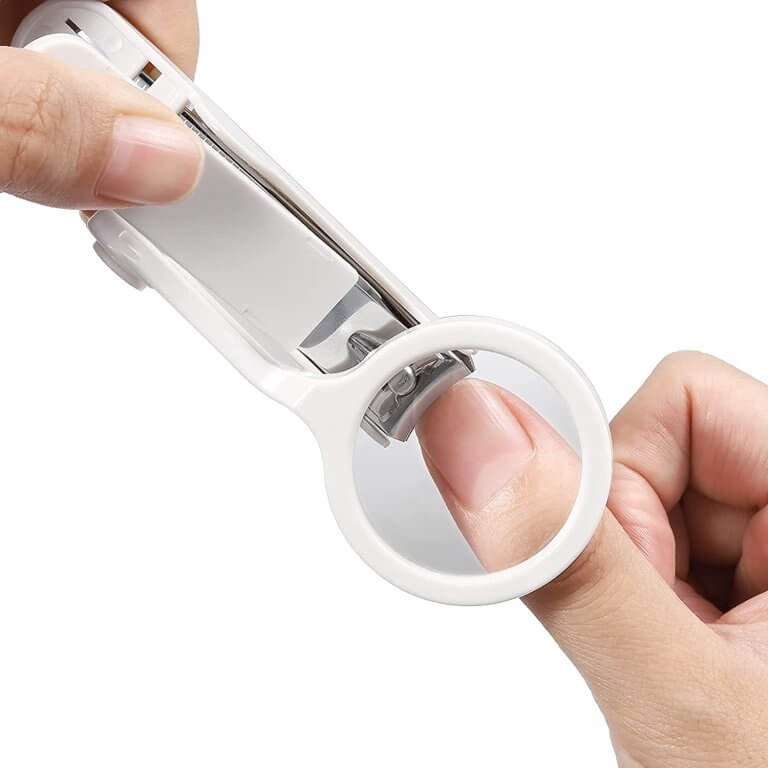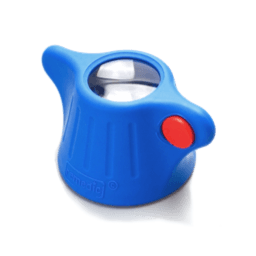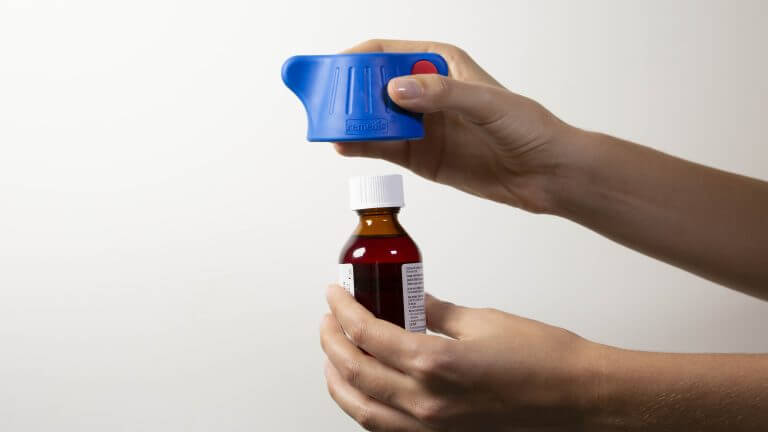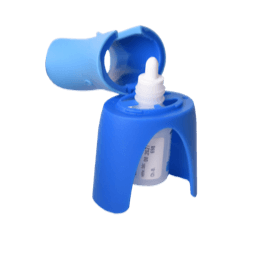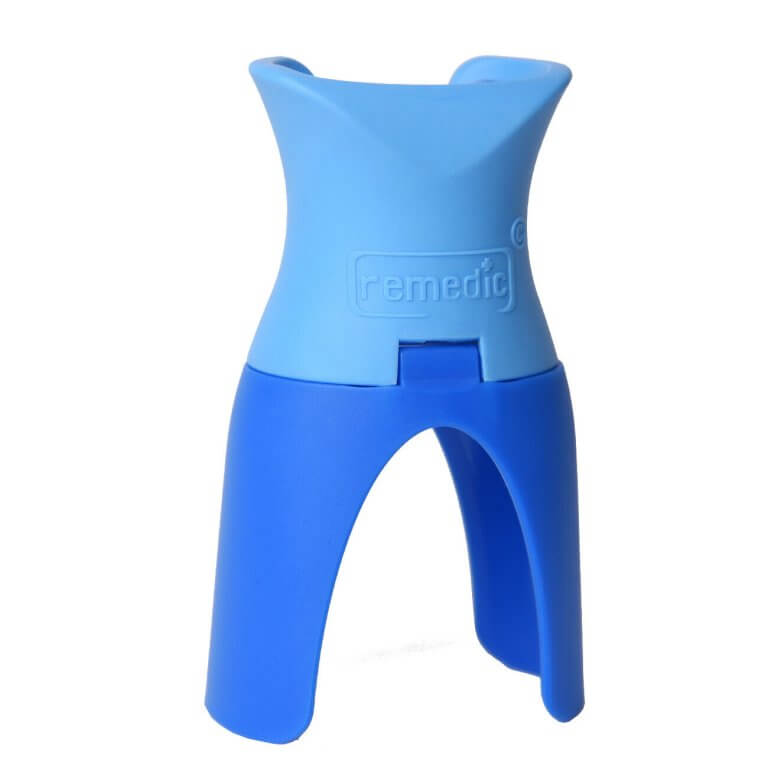Perfect Nail Care Made Easy
Nail Clippers That Give You Precision and Comfort Every Time!
Let’s talk about one of those little tools that we all need but never really think much about – nail clippers. And, if you’re anything like me, finding a pair that can handle thicker nails with ease while still being comfortable to use is a game-changer. That’s why I’m excited to share with you the Remedic Extra Large Nail Clippers with Magnifier – trust me, they make nail care simple, quick, and precise!
I don’t know about you, but I always struggled with clippers that weren’t strong enough for thicker toenails, or worse, ones that would slip out of my hands at the most inconvenient times. 🙄 Enter the Remedic Clippers – they’re large, easy to grip, and the blades are so sharp that they cut through nails smoothly and cleanly every single time. No more jagged edges, no more frustration.
Accurate and Precise – Every Time
What really sets these clippers apart is the 2.5X magnifying glass. How many times have we been in the bathroom, trying to get a good angle, only to struggle with seeing exactly what we’re doing? The magnifier ensures that you see clearly, making trimming so much easier. You can focus on precision without straining your eyes.
Strong Enough for Thicker Nails
Let’s be real, as we age (and even for some of us younger folks), nails tend to get thicker. The Remedic Clippers are sturdy enough to handle thick nails, so no more struggling or having to go over the same spot multiple times. And let me tell you, the satisfaction of that clean, strong cut is something you didn’t even know you needed until you experience it!
Comfortable Grip – No Slipping!
These clippers have a non-slip, comfortable grip that makes holding onto them a breeze, even when you’re working on those tricky angles. I love that they’re extra-large, giving you more control and less chance of fumbling around. If you’ve ever had trouble with small, flimsy clippers, you’ll appreciate how well-designed these are.
Built to Last
We all want products that last, right? The Remedic Clippers are made from high-quality stainless steel, meaning they’re durable and rust-free. You won’t need to replace them anytime soon! And, bonus, they come with a nail file, so you can smooth and shape your nails right after trimming. All-in-one convenience, right there.
Key Benefits:
- Sharp, precise blades for smooth, easy cutting
- 2.5X magnifying glass for better visibility and accuracy
- Sturdy design that handles thicker nails effortlessly
- Ergonomic, non-slip grip for total control and comfort
- Rust-free stainless steel for long-lasting durability
- Bonus nail file included for a complete nail care experience
Whether you’re trimming your nails or helping a family member, these clippers make the job easy. It’s great for anyone, especially if you’re looking for something strong enough for thicker nails but gentle enough to give you precision and comfort.
Ready to Upgrade Your Nail Clippers?
Head over to Amazon and grab your pair of Remedic Extra Large Nail Clippers with Magnifier today! Your nails will thank you. 😊
How to Safely Apply Eye Drops — Step-by-Step Guide for Seniors, Caregivers & Families
Remedic – Smart, ergonomic living aids for every age and ability
Eye drops are essential for treating a variety of eye conditions like dry eyes, glaucoma, and allergies. However, it can sometimes be challenging to apply them correctly, especially for seniors or those with arthritis. Here’s an easy-to-follow guide to help you use eye drops safely and effectively.
How to Safely Apply Eye Drops – Easy Tools & Tips for Seniors & Caregivers
Caring for a loved one who needs daily eye drops? Or maybe you’re managing your own drops and finding it tricky with arthritis, shaky hands, or limited mobility. You’re not alone — many older adults and caregivers struggle to apply eye drops correctly. According to the American Academy of Ophthalmology, proper technique reduces errors and risks. American Academy of Ophthalmology+1
In this guide you’ll find clear, simple instructions, useful assistive tools, and caregiving tips to help you apply eye drops safely, confidently and independently.
Why Proper Eye Drop Technique Matters
Mistakes in eye drop use can lead to infections, decreased effectiveness of medication, and wasted doses. For older adults, arthritis, weak grip, poor vision or tremors add more challenge. The Cleveland Clinic warns that letting the dropper tip touch your eye or applying expired drops raises infection risk. Cleveland Clinic
Step-by-Step: How to Apply Eye Drops Safely
1. Wash your hands and prepare the area
Start fresh — good hygiene prevents contamination.
- Wash your hands thoroughly with soap and water before handling your eye drops.
- Check the information on the eye drop bottle, packing or instruction manuals. Assure you use the correct eye drops and also check the best before date. Shake the eye drop bottle if instructed by your doctor or pharmacist.
- Remove the cap without touching the tip of the bottle to avoid contamination.
2. Position yourself comfortably
Tilt your head back slightly, or lie down if easier. Pull your lower eyelid down to create a “drop pocket”. National Eye Institute+1
- Tilt your head back and look up at the ceiling.
- If you find it hard to hold your head back, sit in a chair or use a sofa with a high backrest for support.
3. Administer the drop
Hold the bottle about one inch from the eye without touching it. Squeeze gently to release a single drop into the pocket. Healthline+1
4. Avoid Contamination
Don’t let the tip of the bottle touch your eye, eyelid, or skin.
If the bottle tip touches any surface, it may pick up bacteria, increasing the risk of infection.
5. Close your eyes and block drainage
Gently close the eye and press the inner corner (near the nose) for 1-3 minutes. This helps the medicine stay in the eye instead of draining away. Glaucoma Research Foundation
6. Wait if using more than one drop type
If you have two medications for the same eye, wait 3–5 minutes between them to avoid dilution. Prevent Blindness
7. Use assistive tools if needed
For shaky hands, reduced grip or arthritis: use a steady surface, rest your hand on your face, or try a drop-aid tool. Remedic offers ergonomic applicators designed to make this easier for all ages and abilities.
8. Wipe Away Excess Drops
If any drops spill out, use a clean tissue to gently wipe the area around your eyes.
9. Store and manage properly
Check expiration date, keep bottle closed, don’t touch the tip, and store as instructed. SafeMedication
Helpful Assistive Products from Remedic
-
Eye Drop Guide / Applicator – Designed to help steady the bottle and aim correctly.
-
Ergonomic gripping aids – For removing caps, handling bottles, when arthritis or hand weakness is present.
These tools are created to support independence, reduce frustration, and help users follow safe eye-drop routines.
Caregiver & Family Support Tips
-
Sit beside the person receiving drops and allow them to hold your hand or steady the bottle.
-
Provide a visual cue or reminder at the same time each day (after breakfast or before bed).
-
Keep an application log or checklist to track drops, especially when multiple medications are involved.
-
Ask the eye-care professional about large-print labels or simplified packaging if vision or dexterity is limited.
Additional Tips:
- Store your eye drops as instructed—some drops need to be kept in the refrigerator.
- If you struggle with eye drop application, ask your doctor about eye drop guides or assistance tools to help aim and apply the drops accurately.
- Never share your eye drops with others to avoid cross-contamination.
Consider Using an Eye Drop Guide
For more accurate application, particularly if you have difficulty with hand movements or blinking reflex, an eye drop guide can be helpful. Devices like the Remedic Eye Drop Guide keep the bottle steady, ensuring proper drop placement without needing to touch your eye. This can be beneficial for individuals with conditions like arthritis, tremors or reduced hand strength.
Following these simple steps can make administering eye drops easier and more effective, ensuring you get the full benefit of your medication. Always consult your doctor or pharmacist if you have any questions about using your eye drops correctly.
🧠 Common Questions Seniors, Caregivers & Families Ask
Do I need more than one drop?
No—one drop is enough. The eye can’t hold more; a second drop often just washes the first out and raises side-effect risk. The Medical Letter+1
How long should I wait between different drops?
Wait at least 3–5 minutes between different medications so the first drop isn’t diluted. If you also use ointment, do drops first, then ointment after ~5 minutes. AAO+1
What is “pressing the inner corner” and why do it?
After the drop, close your eye and press gently on the inner corner (near the nose) for 1–2 minutes (called punctal occlusion). It keeps medicine from draining into your nose/throat and may reduce side effects. Some glaucoma groups suggest up to 3 minutes. National Eye Institute+1
Can I use drops while wearing contact lenses?
Usually remove lenses first. Many prescriptions say wait 10–15 minutes before putting lenses back in. Always follow your label/doctor. MedlinePlus+2MedlinePlus+2
My drops sting—should I worry?
A brief, mild sting can happen. Persistent burning, pain, or worsening redness means call your eye doctor. Preservatives and pH differences can irritate some eyes; preservative-free options may help if you use drops often. (General practice advice aligned with ophthalmology guidance.) AAO
Are “redness relief” drops okay to use often?
Be cautious. Many decongestant “get-the-red-out” drops can cause rebound redness when used repeatedly. Ask your eye doctor about safer alternatives. AAO+1
How should I store my eye drops?
Follow your label. Most can be stored at room temperature away from heat and light; some specific products need refrigeration. When in doubt, check the package insert or ask your pharmacist. AAO
How long can I keep an opened bottle?
Follow the product’s instructions. Many clinicians tell patients to discard multi-dose bottles after about a month, but this is not universal and some guidance for clinics differs. Check your label or pharmacist for the correct “after opening” time for your brand. AAO+1
What if I miss a scheduled eye drop dose?
If you forget, apply the drop when you remember and then continue with your next scheduled dose. Do not double the drop unless instructed by your physician.
My hands tremble and I can’t aim the bottle—what can help?
Use both hands: one to steady the dropper, the other to pull down the eyelid. Rest your elbow on a table or use a drop-aid tool. Ask your eye-care provider about devices designed for shaky hands.
Can I use two different eye-drop bottles back-to-back?
Yes, but wait at least 3 to 5 minutes between different types of drops for the same eye so the first isn’t washed away. Prevent Blindness
How often do I need to replace my eye-drop bottle?
Check the manufacturer’s label for “discard after ___ weeks after opening”. If the bottle is expired, cloudy, or contaminated (tip touched eyelid), discard it. AARP+1
Are over-the-counter drops always safe?
Not always. Some OTC drops carry risks, especially when misused. Always buy from trusted retailers, follow instructions, and ask your optometrist or pharmacist if you’re unsure. Cleveland Clinic
Final Thoughts
Applying eye drops doesn’t have to be stressful or difficult — especially when you use the right approach and tools. Whether you’re a caregiver helping someone else, or managing your own eye drops, the steps above paired with Remedic’s ergonomic aids can make the process smoother and safer.
At Remedic, we believe that good design empowers independence. Let the right routine and the right tools restore confidence in everyday moments.
Remedic – Smart, ergonomic living aids for every age and ability.






